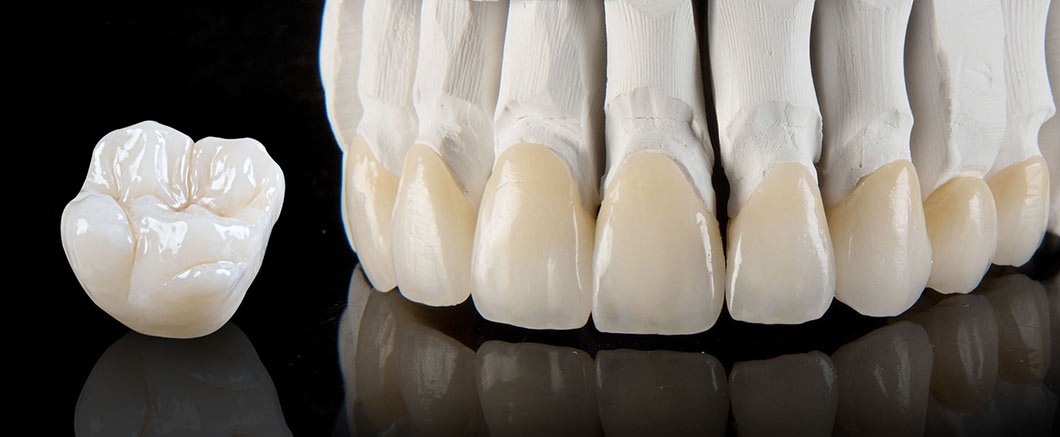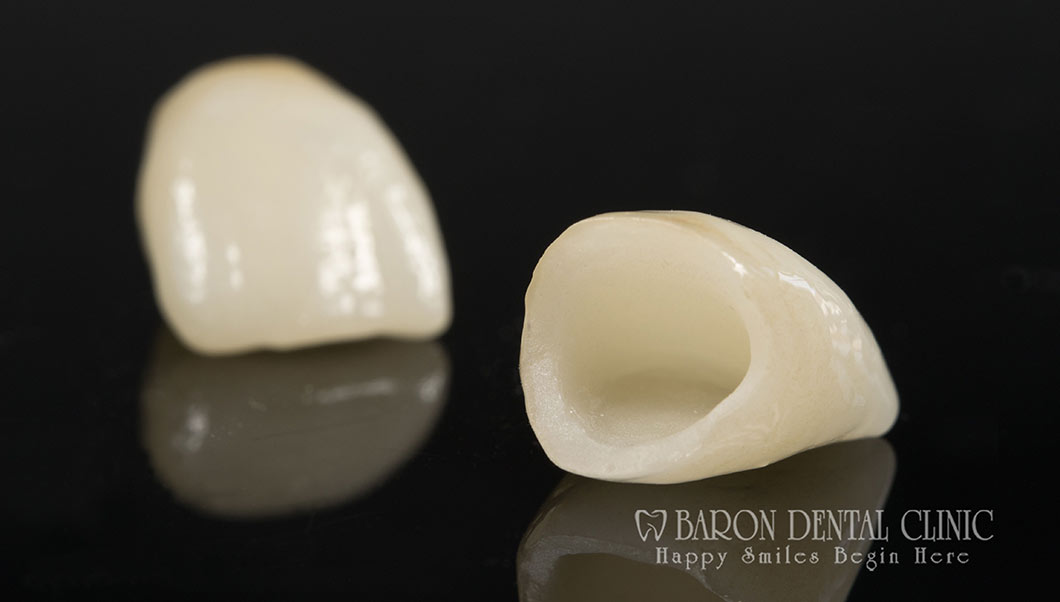Achieve a New Smile with Advanced Aesthetic Dental Treatments

Experiencing severe dental damage, old fillings, tissue loss, or missing teeth? You can achieve a healthier and more beautiful smile quickly with laminate veneers, zirconium crowns, and porcelain-fused-to-metal crowns.
Who Can Benefit from Metal-Fused Porcelain Crowns or Zirconium Crowns?
- Those with single or multiple missing teeth,
- Those with stained teeth, poor fillings, or teeth with altered shapes,
- Those who prefer not to undergo orthodontic treatment,
- Those over the age of 18.
Such individuals can benefit from zirconium or metal-fused porcelain crowns.
Metal-Fused Porcelain Crowns and Dental Bridges
As the name suggests, metal-fused porcelain crowns are made by placing a metal alloy beneath the ceramic. These crowns, produced using Chromium-Cobalt or Chromium-Nickel alloys, are designed to match dental tissue and provide necessary durability. However, the metal underneath affects the appearance as it does not transmit light, resulting in a dull appearance and a dark-colored reflection near the gums. For this reason, metal-supported crowns are not recommended for front teeth due to aesthetic concerns.
Zirconium-Supported Porcelain or Monolithic Zirconium Crowns and Dental Bridges
Zirconium-supported porcelain crowns use a white-colored zirconium alloy instead of metal. These crowns offer an aesthetic appearance close to natural teeth and are much more aesthetically pleasing compared to metal-supported crowns. They reflect light and do not create a dark-colored line near the gums because a white-colored alloy is used for the infrastructure. They are 100% biocompatible and do not cause any allergic reactions. Monolithic zirconium crowns do not have porcelain applied; the entire structure is prepared using 3D printers, resulting in ideal aesthetics.
Laminate Veneers
Laminate aesthetics, also known as leaf porcelain, is an aesthetic procedure applied to the front teeth of those with aesthetic issues. It involves cementing a thin, semi-translucent porcelain layer to the front side of the teeth. These crowns are prepared and placed on existing teeth with perfect harmony and sensitivity. Minimal harm is done to the teeth, as only a very thin layer is removed from the dental surface to meet the patient's smile design needs. This method is highly successful from an aesthetic perspective as the veneers are very thin and contain no metal.
Stages of Performing Porcelain Crowns – Dental Porcelain Bridges
The treatment process is determined based on your preferences after an examination by your dentist. The relevant teeth are shaped to size, and measurements are sent to a dental lab after selecting the right color to match the patient’s skin tone and facial characteristics. Temporary crowns are prepared and placed within the same day. An appointment is then scheduled for the fitting of the chosen infrastructure. After the infrastructure fitting (checking gum harmony, height, and alignment with adjoining teeth), another appointment for a superstructure fitting, known as the final rehearsal, is provided. When the desired result is achieved in the final rehearsal, the process is completed with cementation. If any issues arise during the final rehearsal, such as problems with height or alignment, they are addressed by the dentist, and the teeth are sent back to the lab. Another appointment is scheduled for the same day or the following day, and the crowns are cemented. This process typically takes 7-14 days with 3 or 4 appointments.
Crowns can last about 10 years without issues. However, you can extend their lifespan by brushing at least twice a day, gargling, and using interdental brushes or floss. Old crowns might lead to tooth decay, bad breath, receding gums, and tooth loss. Therefore, old and incompatible crowns should be renewed.



Laminate Veneer








